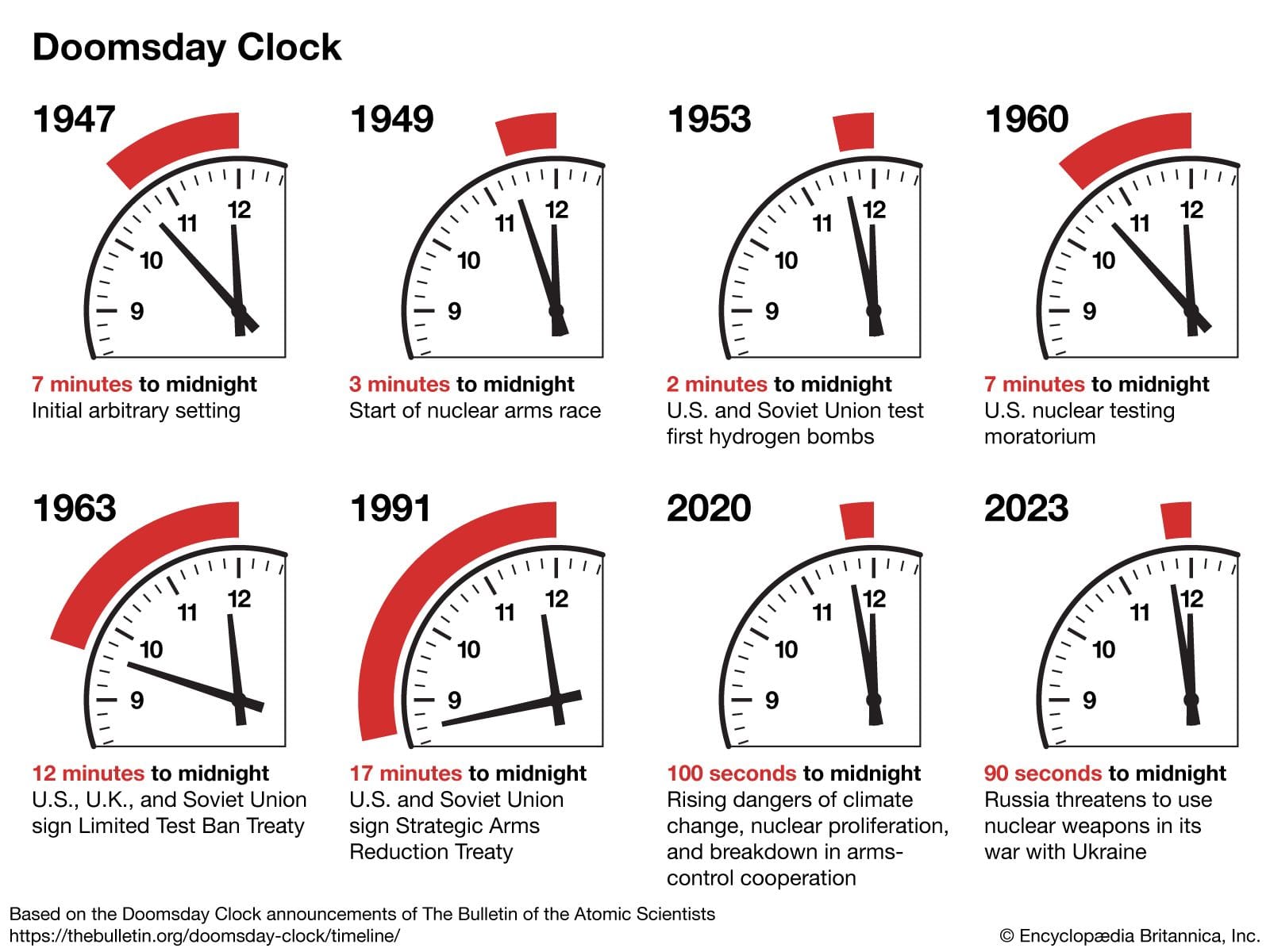The Doomsday Clock, created by the Bulletin of the Atomic Scientists in 1947, focuses on the threats of nuclear war and climate change. Used as symbols on the cover of their magazine, the Doomsday Clock is used to communicate the metaphorical proximity of global catastrophe, represented by either moving closer to or further away from midnight. The closer a clock is to midnight, the nearer humanity is to total annihilation.
In early 2022, the Doomsday Clock was moved to 100 seconds to midnight – the closest it has ever been. This change reflects the global challenges brought on by climate change, the continued existence of nuclear weapons, and the exacerbation of these threats by ongoing conflicts and political instability. The decision to move the clock closer to midnight indicates the belief that the world is closer to a catastrophic and potentially irreversible damage.
The situation of the Doomsday Clock is the result of many factors, including climate change, political tensions, nuclear weapons, and technological advancements. Climate change continues to be an existential threat with long-lasting and drastic consequences. The ongoing conflicts, coupled with political tensions and climate change, have the potential to cause nuclear war or other large-scale disasters. Furthermore, the growing concerns over the misuse of technology, such as artificial intelligence, have places additional responsibilities on humanity’s shoulders.
However, there is still hope. Many countries are working on reducing their carbon emissions and striving for a cleaner and more sustainable world. Plenty of research is being made into improving nuclear disarmament, although progress is slow. Meanwhile, organizations like the Bulletin of the Atomic Scientists aim to educate the public on the importance of these issues and encourage action.
It may be overwhelming to think about how close humanity is to a complete disaster. However, it is essential to understand what factors are contributing to this looming threat and to never give up hope for a better tomorrow. Our understanding and awareness of these issues are crucial in taking measures to prevent the end of humanity as we know it.



